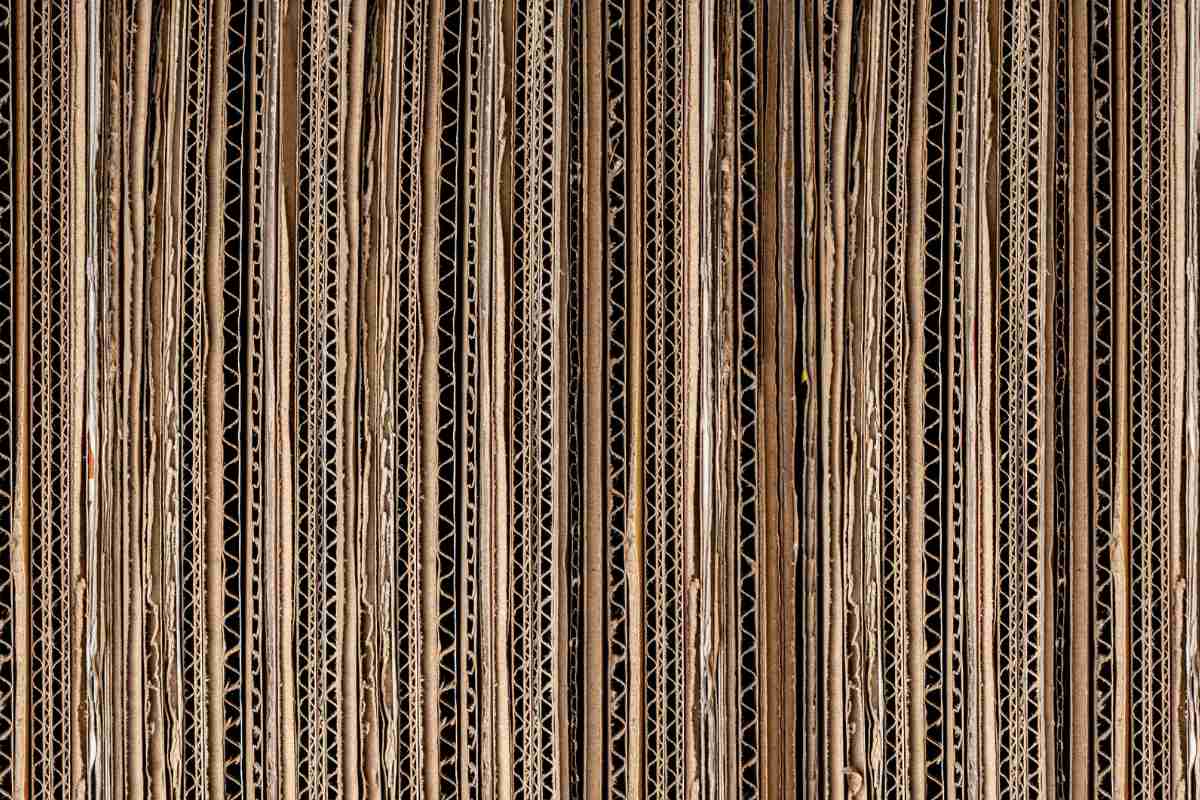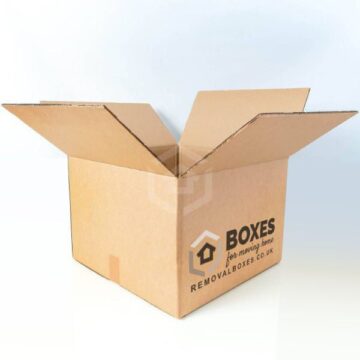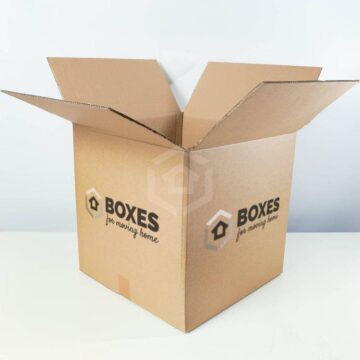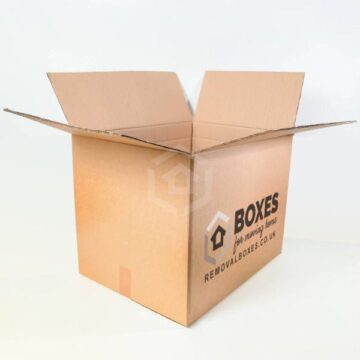The Science Behind the Strength:
Cardboard boxes are an essential component of modern logistics and storage, used universally for shipping, moving, and packing. Whether referred to as removal boxes, moving boxes, or packing boxes, these versatile containers owe their popularity to their impressive strength and durability. Understanding the science behind their strength reveals why they are so effective in safeguarding goods during transit and storage.
Buy STRONG REMOVAL BOXES here.
The Basics of Cardboard Construction
Types of Cardboard
Cardboard used in removal boxes, moving boxes, and packing boxes typically falls into two categories: corrugated cardboard and paperboard.
- Corrugated Cardboard: This is the most common type used for shipping and moving boxes. It consists of three layers: an outer layer (liner board), an inner layer (liner board), and a fluted middle layer (corrugating medium). The fluted layer provides the structure’s strength and rigidity.
- Paperboard: Often used for lighter packaging, paperboard is a single layer of thick paper. It’s less durable than corrugated cardboard but is suitable for packing smaller, less fragile items.
Corrugated Cardboard Structure
The corrugated cardboard’s structure is the key to its strength. The fluting in the middle layer forms arches that are connected to the liner boards, creating a sturdy framework that can withstand substantial pressure and weight.
- Flute Profiles: Flutes come in various sizes, commonly classified as A, B, C, E, and F. Larger flutes (A) provide better cushioning and are used for more robust moving boxes, while smaller flutes (F) are better for printing and finer details in packing boxes.
- Layer Combinations: Depending on the required strength, corrugated cardboard can be single-wall (one fluted layer between two liner boards), double-wall (two fluted layers and three liner boards), or triple-wall (three fluted layers and four liner boards).
The Science of Strength
The strength of cardboard boxes, especially removal boxes, moving boxes, and packing boxes, can be analysed through several scientific principles, including material science, engineering, and physics.
Material Properties
- Tensile Strength: This measures the force required to pull something to the point where it breaks. The liner boards provide high tensile strength, ensuring the box holds together under tension.
- Compression Strength: This is crucial for stacking and storing boxes. The fluted layer distributes weight evenly, allowing the boxes to withstand vertical pressure without collapsing.
- Bursting Strength: Also known as the Mullen Test, this measures the box’s resistance to puncture. Strong liner boards and well-designed flutes help the box resist punctures and tears.
Engineering Design
The engineering design of corrugated cardboard, particularly the flute design, significantly contributes to the box’s overall strength.
- Arch Principle: The curved arches in the fluting distribute weight and force evenly across the surface, preventing any single point from bearing too much load and causing the box to fail.
- Load Distribution: The combination of liner boards and flutes ensures that the load is distributed across a large area, enhancing the box’s ability to support heavy items.
Manufacturing Process
The manufacturing process of corrugated cardboard involves several steps designed to maximise its strength and durability.
- Pulping: Wood chips are broken down into pulp, which is then processed to create paper for the liner boards and the corrugating medium.
- Corrugating: The corrugating medium is passed through corrugating rolls to create the fluted structure. This structure is then glued between two liner boards.
- Cutting and Shaping: The large sheets of corrugated cardboard are cut and shaped into boxes. Precision in this step ensures that the boxes will fit together perfectly and maintain their structural integrity.
Types of Strength Testing
To ensure that removal boxes, moving boxes, and packing boxes meet the required standards, they undergo various strength tests.
- Edge Crush Test (ECT): Measures the box’s ability to withstand a crushing force applied to the edge. It’s a good indicator of stacking strength.
- Box Compression Test (BCT): Assesses the maximum load a box can handle before collapsing. This test is critical for understanding how boxes will perform when stacked.
- Drop Test: Simulates the box being dropped from different heights to check for durability and protection of contents.
Factors Influencing Cardboard Strength
Several factors can influence the strength of cardboard boxes, making them more or less suitable for different applications.
Flute Size and Type
The size and type of flute play a critical role in determining the box’s strength.
- Larger Flutes (A, C): Provide better cushioning and are ideal for heavier items, often used in removal boxes and moving boxes.
- Smaller Flutes (E, F): Better suited for lighter items and detailed printing, common in packing boxes.
Moisture Content
Cardboard strength can be compromised by moisture. High humidity or exposure to water can weaken the paper fibers, reducing the box’s tensile and compression strength. Coatings and treatments can be applied to make cardboard more moisture-resistant.
Box Design and Construction
The design of the box itself, including how it is constructed and assembled, can impact its strength.
- Joint Type: Boxes can be joined using glue, tape, or staples. Each method has its advantages, but glued joints are generally stronger and more durable.
- Reinforcements: Adding reinforcements, such as double-walled construction, can significantly increase a box’s load-bearing capacity.
Applications and Uses
Understanding the strength of cardboard boxes allows for their optimal use in various applications.
Removal Boxes
Removal boxes are designed to carry heavy and sometimes fragile items during a move. They often use double-walled corrugated cardboard to ensure they can withstand the rigours of moving.
- Heavy Items: Suitable for books, kitchen appliances, and other heavy household goods.
- Fragile Items: With proper padding, removal boxes can protect fragile items like glassware and electronics.
-
%22%20transform%3D%22translate(.7%20.7)%20scale(1.40625)%22%20fill-opacity%3D%22.5%22%3E%3Cellipse%20fill%3D%22%23d69755%22%20rx%3D%221%22%20ry%3D%221%22%20transform%3D%22rotate(96.5%205%20129.3)%20scale(65.85285%2084.21045)%22%2F%3E%3Cellipse%20fill%3D%22%23fff%22%20rx%3D%221%22%20ry%3D%221%22%20transform%3D%22matrix(-38.99609%2045.5854%20-189.04115%20-161.7155%2052.4%20215.4)%22%2F%3E%3Cellipse%20fill%3D%22%23fff%22%20rx%3D%221%22%20ry%3D%221%22%20transform%3D%22matrix(98.80643%20-19.02712%207.37616%2038.30383%2032.6%2020.4)%22%2F%3E%3Cellipse%20fill%3D%22%23fff%22%20cx%3D%22112%22%20cy%3D%22236%22%20rx%3D%22255%22%20ry%3D%2223%22%2F%3E%3C%2Fg%3E%3C%2Fsvg%3E) Medium Moving Box£2.70 (INC VAT)
Medium Moving Box£2.70 (INC VAT)
-
%27%20fill-opacity%3D%27.5%27%3E%3Cellipse%20fill%3D%22%23c28a33%22%20fill-opacity%3D%22.5%22%20rx%3D%221%22%20ry%3D%221%22%20transform%3D%22matrix(48.28827%20105.2026%20-77.28766%2035.47524%20164.1%20192)%22%2F%3E%3Cellipse%20fill%3D%22%23eef8ff%22%20fill-opacity%3D%22.5%22%20rx%3D%221%22%20ry%3D%221%22%20transform%3D%22matrix(-2.04473%2043.89677%20-358.20536%20-16.68536%20122.6%20325.5)%22%2F%3E%3Cellipse%20fill%3D%22%23eff6ff%22%20fill-opacity%3D%22.5%22%20rx%3D%221%22%20ry%3D%221%22%20transform%3D%22matrix(-1.79619%2039.73287%20-347.073%20-15.68999%20224.1%2026.9)%22%2F%3E%3Cellipse%20fill%3D%22%23edf2fc%22%20fill-opacity%3D%22.5%22%20rx%3D%221%22%20ry%3D%221%22%20transform%3D%22matrix(21.24272%20273.37426%20-65.67904%205.10363%20.7%20188.4)%22%2F%3E%3C%2Fg%3E%3C%2Fsvg%3E) Large Moving Box£4.50 (INC VAT)
Large Moving Box£4.50 (INC VAT)
-
%27%20fill-opacity%3D%27.5%27%3E%3Cpath%20fill%3D%22%23ef9650%22%20fill-opacity%3D%22.5%22%20d%3D%22M63.3%20269.2l16.2-185%20187.7%2016.5L251%20285.6z%22%2F%3E%3Cellipse%20fill%3D%22%23f2ffff%22%20fill-opacity%3D%22.5%22%20rx%3D%221%22%20ry%3D%221%22%20transform%3D%22matrix(74.55583%20350.75762%20-65.74552%2013.97464%2024.6%20244.4)%22%2F%3E%3Cellipse%20fill%3D%22%23f0feff%22%20fill-opacity%3D%22.5%22%20rx%3D%221%22%20ry%3D%221%22%20transform%3D%22matrix(10.88007%20-65.72116%20302.08207%2050.00936%20192%2018)%22%2F%3E%3Cellipse%20fill%3D%22%23f4ffff%22%20fill-opacity%3D%22.5%22%20rx%3D%221%22%20ry%3D%221%22%20transform%3D%22matrix(-14.34572%20-67.49131%20350.75762%20-74.55583%20261.7%20359.3)%22%2F%3E%3C%2Fg%3E%3C%2Fsvg%3E) Extra Large Moving Box£5.00 (INC VAT)
Extra Large Moving Box£5.00 (INC VAT)
Moving Boxes
Moving boxes are similar to removal boxes but can vary more in size and type based on the items being transported.
- Standard Moving Boxes: Typically single-wall boxes used for lighter items like clothes, toys, and kitchenware.
- Specialty Moving Boxes: Designed for specific items such as wardrobes, mirrors, or mattresses, ensuring optimal protection and ease of transport.
Packing Boxes
Packing boxes are often used for shipping goods and can range from small paperboard boxes to large corrugated cardboard containers.
- Small Packing Boxes: Ideal for smaller, lightweight items such as cosmetics, electronics, and food products.
- Large Packing Boxes: Used for bulkier items, requiring stronger materials and construction to prevent damage during transit.
Environmental Considerations
Cardboard boxes, including removal boxes, moving boxes, and packing boxes, are often lauded for their environmental benefits.
Recyclability
Cardboard is highly recyclable, making it an eco-friendly choice. Most cardboard boxes can be recycled multiple times, reducing the need for virgin materials and minimising environmental impact.
Biodegradability
Cardboard is biodegradable, meaning it will break down naturally over time. This reduces its impact on landfills compared to non-biodegradable materials like plastic.
Sustainable Sourcing
Many cardboard manufacturers source their materials from sustainably managed forests, ensuring that their production processes do not contribute to deforestation.
Innovations in Cardboard Technology
The science behind cardboard boxes continues to evolve, leading to new innovations that enhance their strength and usability.
Improved Fluting Designs
Advances in fluting technology have led to stronger and more efficient designs. These new fluting patterns provide better load distribution and increased compression strength without adding extra weight.
Advanced Coatings
Innovative coatings can improve the water resistance and durability of cardboard boxes, making them suitable for a wider range of environments and applications.
Smart Packaging
Integration of technology, such as QR codes and RFID tags, into cardboard boxes can improve tracking and inventory management, providing additional benefits beyond just physical strength.
Practical Tips for Using Cardboard Boxes
To maximise the strength and utility of removal boxes, moving boxes, and packing boxes, consider these practical tips:
- Proper Packing Techniques: Distribute weight evenly and avoid overloading boxes. Use padding materials like bubble wrap or packing paper to protect fragile items.
- Sealing Methods: Use high-quality packing tape to seal boxes securely. Reinforce seams and edges to prevent boxes from opening during transit.
- Handling and Storage: Handle boxes with care and store them in a dry, cool place to maintain their strength. Avoid stacking them in ways that might cause the lower boxes to collapse.
Conclusion
The strength of cardboard boxes, whether used as removal boxes, moving boxes, or packing boxes, is a result of intricate design and advanced manufacturing processes. By understanding the science behind their construction and the factors influencing their durability, we can appreciate their critical role in modern logistics and storage. Innovations continue to improve their functionality, ensuring that cardboard boxes remain a reliable and sustainable choice for protecting our belongings during transit and storage.



